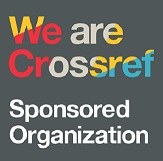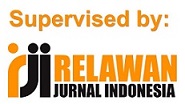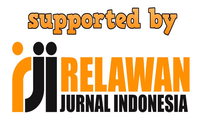NARRATIVE TRANSFORMATION IN BECAUSE OF WINN-DIXIE: A STRUCTURALIST APPROACH
Abstract
This study aims to find the character Winn-Dixie’s narrative function in Kate DiCamillo’s Because of Winn-Dixie using A.J. Greimas’ actantial model. While previous research often focused on the novel’s emotional and psychological themes, this paper offers a structuralist approach to highlighting how narrative functions operate beneath the surface through the usage of actantial models and isotopes. The study uses descriptive qualitative method to examine narrative sequences to show how Winn-Dixie facilitates Opal’s movement from loneliness to connection, and from emotional fragmentation to relational wholeness. The findings demonstrate Winn-Dixie’s structural role as a helper actant and catalyst for the protagonist’s emotional transformation and that Winn-Dixie is not merely a symbolic or emotional figure but an essential structural force that shapes the novel’s progression and coherence. This research contributes an innovative perspective by applying classical structuralist theory to contemporary children’s literature, thereby enriching both narrative studies and literary criticism in the field.
Keywords
Full Text:
PDFReferences
Arafah, B., Abbas, H., & Hikmah, N. (2021). Saving the environment: environmental lessons in colin thiele’s february dragon. Journal of Language Teaching and Research, 12(6), 935–941. https://doi.org/10.17507/jltr.1206.09
Calabria, K., & Crawford, P. A. (2015). Youthful wanderings (spiritual journeys in the works of kate dicamillo). In Magda Kučerková (Ed.), Duchovná cesta a jej podoby v literatúre (pp. 302–308). Univerzita Konštantína Filozofa v Nitre.
Cheng, H.-F. (2020). Learning english: A study of english novel reading camp. Mediterranean Journal of Social & Behavioral Research, 4(2), 31-34. https://doi.org/10.30935/mjosbr/9598
Christiansen, C. E. (2021). Does fiction reading make us better people? empathy and morality in a literary empowerment programme. Ethnos, 88(5), 994–1013. https://doi.org/10.1080/00141844.2021.2007158
Elick, C. (2015). Talking animals in children’s fiction: A critical study. McFarland.
Junker, C. R., & Jacquemin, S. J. (2017). How does literature affect empathy in students? College Teaching, 65(2), 79–87. https://doi.org/10.1080/87567555.2016.1255583
Karnanta, K. Y. (2015). Struktural (dan) semantik: teropong strukturalisme dan aplikasi teori naratif aj greimas. Atavisme, 18(2), 171–181. https://doi.org/10.24257/atavisme.v18i2.113.171-181
DiCamillo, K. (2000). Because of winn-dixie. Candlewick Press.
Kristianto, B. R. D., Leba, M. C. I., & Elvina, A. M. (2022). narrative analysis of todorov film story of dinda. Jurnal Public Corner, 17(12). https://doi.org/10.24929/fisip.v17i2.2112
McDonough, M. S. (2017). McDonough, M. (2017). From damsel in distress to active agent: Female agency in children’s and young adult fiction. (Doctoral dissertation). Retrieved from https://ir.library.louisville.edu/etd/2728/
Nel, P., & Paul, L. (2011). Keywords for children’s literature. New York: NYU Press. https://muse.jhu.edu/book/72933.
Nesanargunam, E. E., & Anand, J. A. (2021). The inseparability of sweetness and sadness in life: a study on kate dicamillo’s because of winn-dixie. Turkish Online Journal of Qualitative Inquiry, 12(8).
O’sullivan, E. (2023). Historical dictionary of children’s literature. Rowman & Littlefield.
Qasim, Z., & Qasim, A. (2022). Narratology and character functions of sohni mahiwal: An actantial analysis. Journal of Humanities, Social and Management Sciences (JHSMS), 3(1), 154–168. https://doi.org/10.47264/idea.jhsms/3.1.11
Roy, S. (2024). The boy and his companion animal: a post-anthropocentric reading of agency in flora and ulysses, free willy and how to train your dragon trilogy. In J. Godlewicz-Adamiec & P. Piszczatowski (Eds.), Re-Thinking Agency (Vol. 3, Issue 3, pp. 167–189). V&R Unipress. https://doi.org/10.14220/9783737017626
Saraswati, R. (2022). Greimas’ actantial model in the hunger games movie. Akrab Juara: Jurnal Ilmu-Ilmu Sosial, 7(3), 314–321.
Trisari, A. (2021). Struktur naratif vladimir propp (tinjauan konseptual). Jurnal Salaka: Jurnal Bahasa, Sastra dan Budaya Indonesia, 3(1), 10-19. https://doi.org/10.33751/jsalaka.v3i1.3315
Supiastutik, S., WSWW, D. P., & Ramadani, O. P. C. (2023). Gender stereotypes in boyd smith’s the story of pocahontas and captain john smith: A greimas’ actantial model. Lingua Cultura, 17(1), 49–57. https://doi.org/10.21512/lc.v17i1.8574
Vaughn, M., Sotirovska, V., Darragh, J. J., & Elhess, M. (2021). Examining agency in children’s nonfiction picture books. Children’s Literature in Education, 53(1), 33–51. https://doi.org/10.1007/s10583-021-09435-y
Wilburn, M., Gonzales, J., Stavinoha, M., Martinez, M., & Harmon, J. (2021). Ya author: “Miss, it’s all coming together!”: Discovering the power of patterns in a novel. Voices from the Middle, 28(3), 20–24. https://doi.org/10.58680/vm202131175
Yuniasti, H. (2019). Analisis struktur naratif a.j. Greimas dalam novel lelaki harimau karya eka kurniawan. KEMBARA: Jurnal Keilmuan Bahasa, Sastra, dan Pengajaran, 5(2), 195-207. https://doi.org/10.22219/kembara.v5i2.9959
Zito, J. (2018). Animal protagonists in children’s literature (Undergraduate thesis, State University of New York New Paltz). Retrieved from https://soar.suny.edu/handle/20.500.12648/1383
DOI: https://doi.org/10.30743/ll.v9i1.11064
Refbacks
- There are currently no refbacks.
Fakultas Sastra
Universitas Islam Sumatera Utara (UISU), Medan
Jl. Sisingamangaraja Teladan Medan 20217
Telp. (061) 7869911, e-mail: language_literacy@sastra.uisu.ac.id









